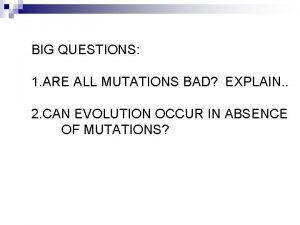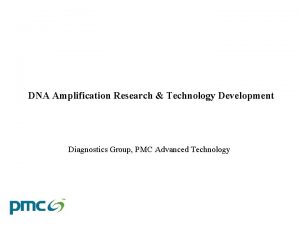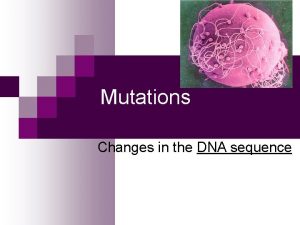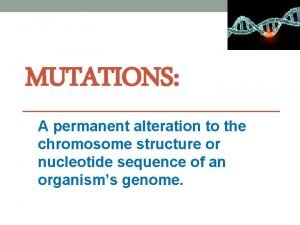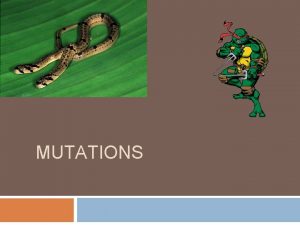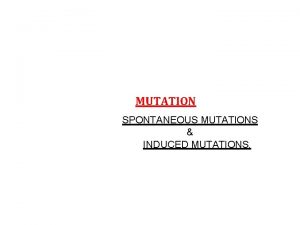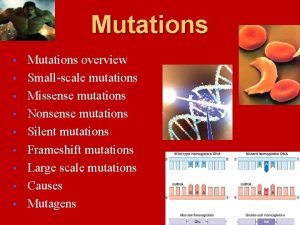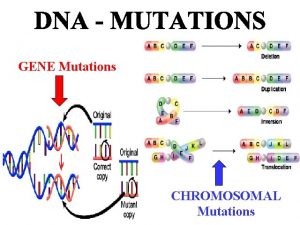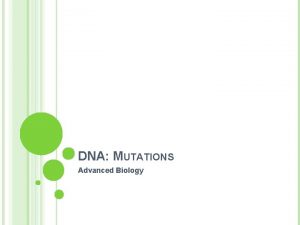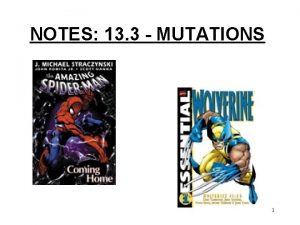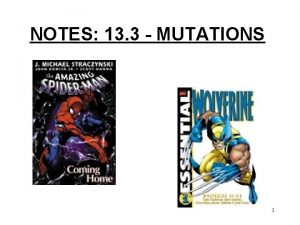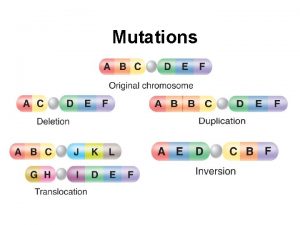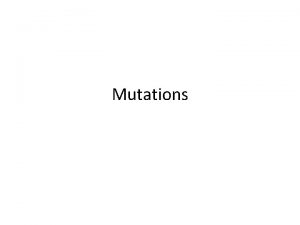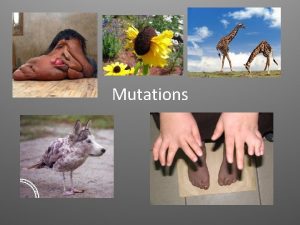Mutations in DNA Mutations Mutations changes in the















- Slides: 15

Mutations in DNA

Mutations • Mutations: changes in the DNA nucleotide sequence • Occurs when: – Errors are made during DNA replication (copying) – Errors are made during transcription – DNA is exposed to mutagens • Source of variation in living things

How do mutations affect the cell? • Fact 1: Sequence of DNA codes for the sequence of amino acids • Fact 2: Sequence of amino acids determines the shape of the protein • Fact 3: Shape of a protein determines the proteins functions (capabilities). • Question: What’s the problem with mutations? • Answer: Mutations can create nonfunctioning or malfunctioning proteins

OBJ 15 thesunwashotbuttheoldmandidnotgethishat the sun was hot but the old man did not get his hat the sun was hot but the ol’ man did not get his hat the sun was hot but the old man did not get his cat the sun was hot but the old. an did not get his hat the dsu nwa sho tbu tth eol dma ndi dno tge thi sha t 4

Is mutation a bad word? • Sometimes, yes! • Many times, no! – Mutations create variation in populations – Variations can give individuals a greater chance for survival (blubber in a whale, fighting off an infection because of a newly shaped immune system protein) – Some mutations are “silent” in that they do not affect protein shape and/or function

If I have a mutation in a gene thats important for survival, will I die? • Depends on severity of mutation (how badly it alters the protein) • Remember– we have TWO copies of each gene (one from mom, one from dad). – If one “normal copy” of a gene compensates for a “broken copy”, the mutation is called recessive – If one broken copy is enough to do damage, called a dominant mutation

Sickle Cell Point Mutation


Sickle vs. normal RBC

Phenylketonuria (PKU) • Caused by a recessive mutation in the gene that codes for an enzyme (PAH) that converts phenylalanine, an amino acid, to tyrosine, another amino acid • Build up of phenylalanine byproduct causes mental retardation • http: //www. dnaftb. org/ygyh/pku/cause. htm

Albinism • Caused by a recessive mutation in a gene that codes for an enzyme that makes melanin • Melanin gives hair, skin, and eyes pigmentation, so a lack causes paleness – Problems: sunburn, skin cancer, retina damage



Tay-Sachs • Recessive mutation in a gene that codes for a protein that prevents lipid build up in brain cells. – Lipid build up destroys brain cells • Death occurs in early childhood • More common in Ashkenazi Jewish populations

Cystic Fibrosis (CF) and Huntington Disease (HD) • CF: Recessive mutation that causes damage to the lungs and pancreas • HD: Dominant mutation that causes progressive breakdown of brain cells. – Occurs in middle age.
 Silent mutation
Silent mutation Mutations in dna
Mutations in dna Dna types of mutations
Dna types of mutations Changes in latitudes, changes in attitudes meaning
Changes in latitudes, changes in attitudes meaning Chemical vs physical change
Chemical vs physical change A permanent alteration that changes a dna sequence
A permanent alteration that changes a dna sequence Coding dna and non coding dna
Coding dna and non coding dna Replication process
Replication process Dna polymerase function in dna replication
Dna polymerase function in dna replication Chapter 11 dna and genes
Chapter 11 dna and genes Bioflix activity dna replication dna replication diagram
Bioflix activity dna replication dna replication diagram Thể thơ truyền thống
Thể thơ truyền thống Cái miệng nó xinh thế
Cái miệng nó xinh thế Các châu lục và đại dương trên thế giới
Các châu lục và đại dương trên thế giới Từ ngữ thể hiện lòng nhân hậu
Từ ngữ thể hiện lòng nhân hậu Diễn thế sinh thái là
Diễn thế sinh thái là
